Expanding upon all the testing we performed in our day-one 3rd-gen Ryzen coverage, today we'll be running a clock-for-clock comparison benchmark. IPC stands for "instructions per cycle" and it can be a good indicator of a processor's architecture efficiency. Traditionally Intel Coffee Lake CPUs have offered high IPC coupled with a high operating frequency and that’s the best combination for maximum performance. Although AMD is still trailing when it comes to frequency, they appear to have closed in and possibly exceeded Intel’s IPC performance with this last update.
To see how much headway AMD’s made here, we’re going to neutralize as many variables as we can, while also keeping things as realistic as possible.
The first and most obvious step is to remove core frequency from the equation and to do this we’ve locked all CPU cores at 4 GHz. Any type of boost technology has been disabled, meaning the cores cannot go past 4 GHz and all cores are clocked at 4 GHz. Then for the Ryzen 9 3900X we’ve disabled two cores in each chiplet, taking it from an 12-core part down to an 8-core part. All CPUs tested will have 8 cores active, but where the 3700X has them all in a single die, the 3900X spreads the cores across two dies (two 4-core chiplets).
The 3rd-gen Ryzen CPUs have been tested on the Gigabyte X570 Aorus Xtreme using the AGESA 1.0.0.3AB BIOS revision, 1st and 2nd-gen Ryzen have been tested on the Asus ROG Crosshair 7 Hero, and the Coffee Lake CPUs on the Gigabyte Z390 Aorus Ultra. All configurations used the same G.Skill FlareX DDR4-3200 memory using the xtreme memory profile and the same MSI GTX 2080 Ti graphics card.
A small disclaimer we like to add for this kind of article: we're testing purely for the science of it and this is not buying advice. The Coffee Lake CPUs certainly have a clock speed advantage out of the box, but that doesn’t necessarily make them the best choice. For real-world performance please refer to our recent Ryzen 9 3900X, 3700X and R5 3600 reviews.
Application Benchmarks
We already know Ryzen tends to dominate in workstation tasks even with a clock speed disadvantage, but there's more to learn about these numbers. In Cinebench R20's multi-core score the 3900X and 3700X provided roughly the same performance, making them around 14% faster than the 9900K when matched clock-for-clock. Moreover, they were 18% faster than the previous-gen 2700X. That’s a significant improvement in IPC performance.
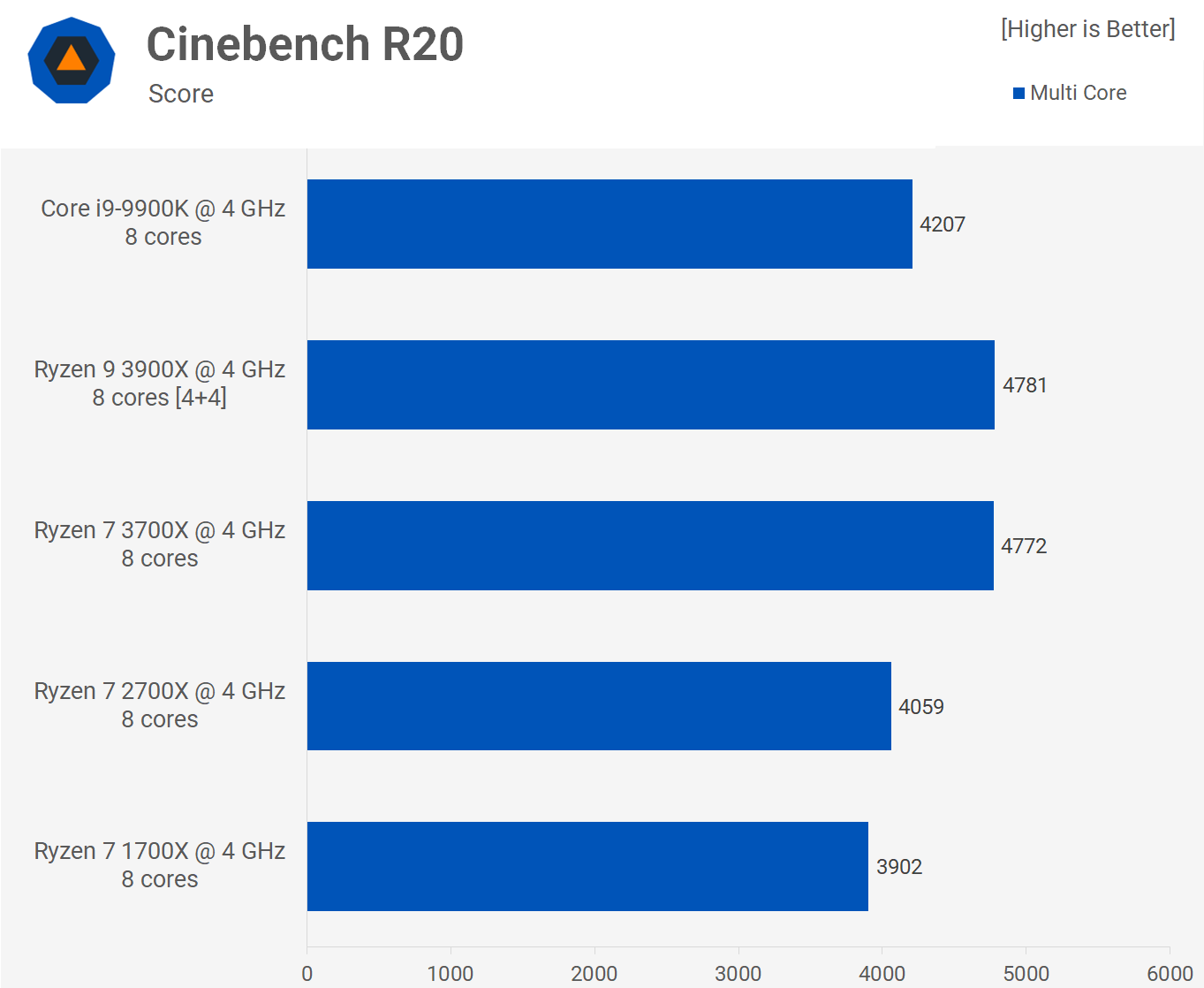
Testing single core performance sees a 13% performance uplift for 3rd-gen Ryzen parts over the 2700X. They were also 9% faster than the 9900K, so pretty good stuff from these new processors.
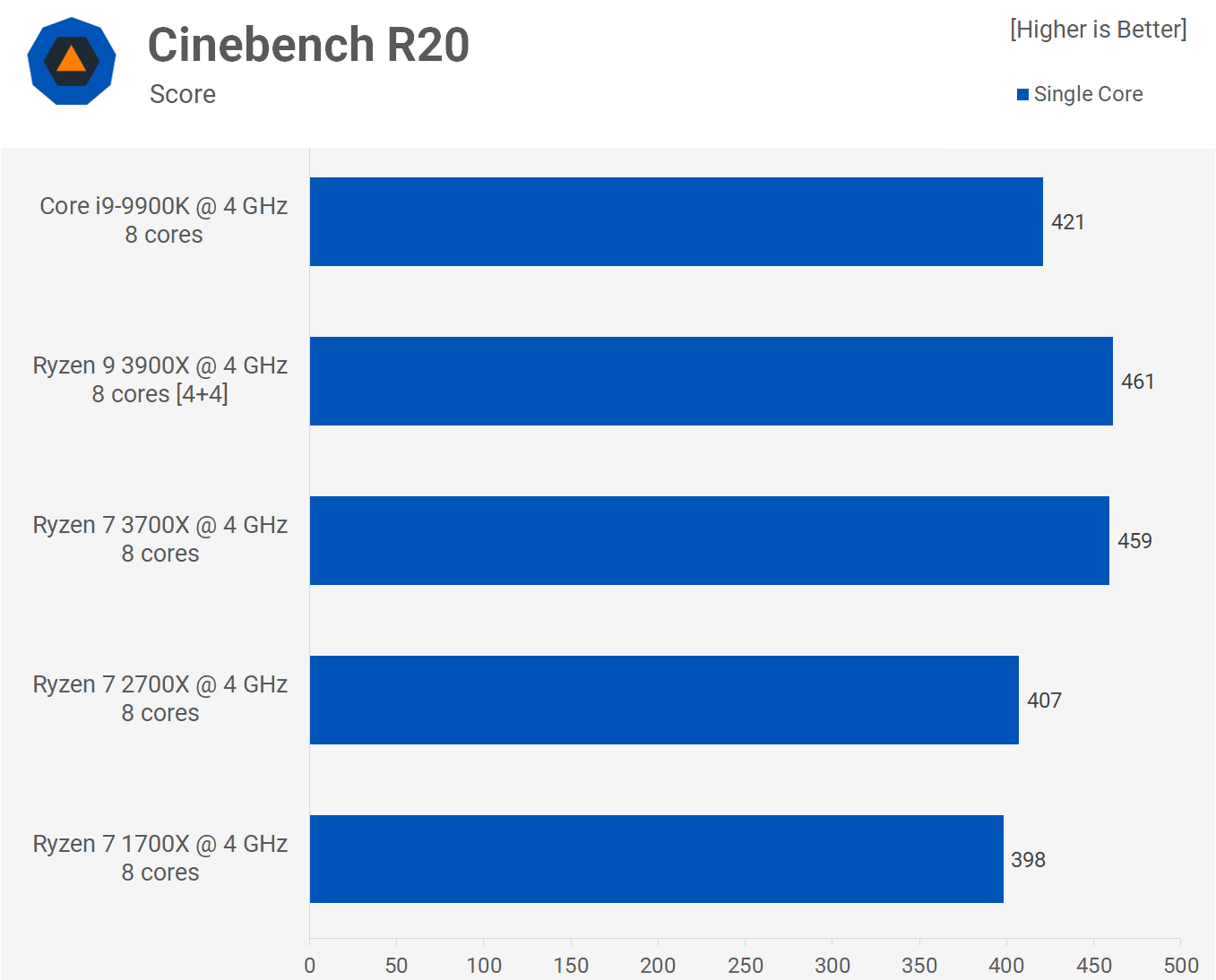
The dual chiplet design of the 3900X improved performance in the V-Ray benchmark by 2% over the 3700X, not a substantial difference but it was consistently faster in this test. This meant when matched at the same clock speed, the 3900X was 6% faster than Intel’s i9-9900K and 13% faster than the 2700X.

Using the Corona benchmark, this time the 3900X was 3% faster than the 3700X. The 3900X was also 5% faster than the 9900K and 16% faster than the 2700X. Now let’s see how things look in a few games.

Gaming Benchmarks
The first game we’re checking out is Battlefield V. Despite a hefty reduction in clock speed, the Core i9-9900K still manages to take the top spot. The 1% low performance was very impressive and here the 9900K was 9% faster than 3rd-gen Ryzen processors.
When looking at the average frame rate we see that the 3700X was 8% faster than the 2700X, while the 3900X was 13% faster. This means that even when matched at the same clock speed with the same number of cores, the 3900X is still 5% faster than the 3700X, very interesting.
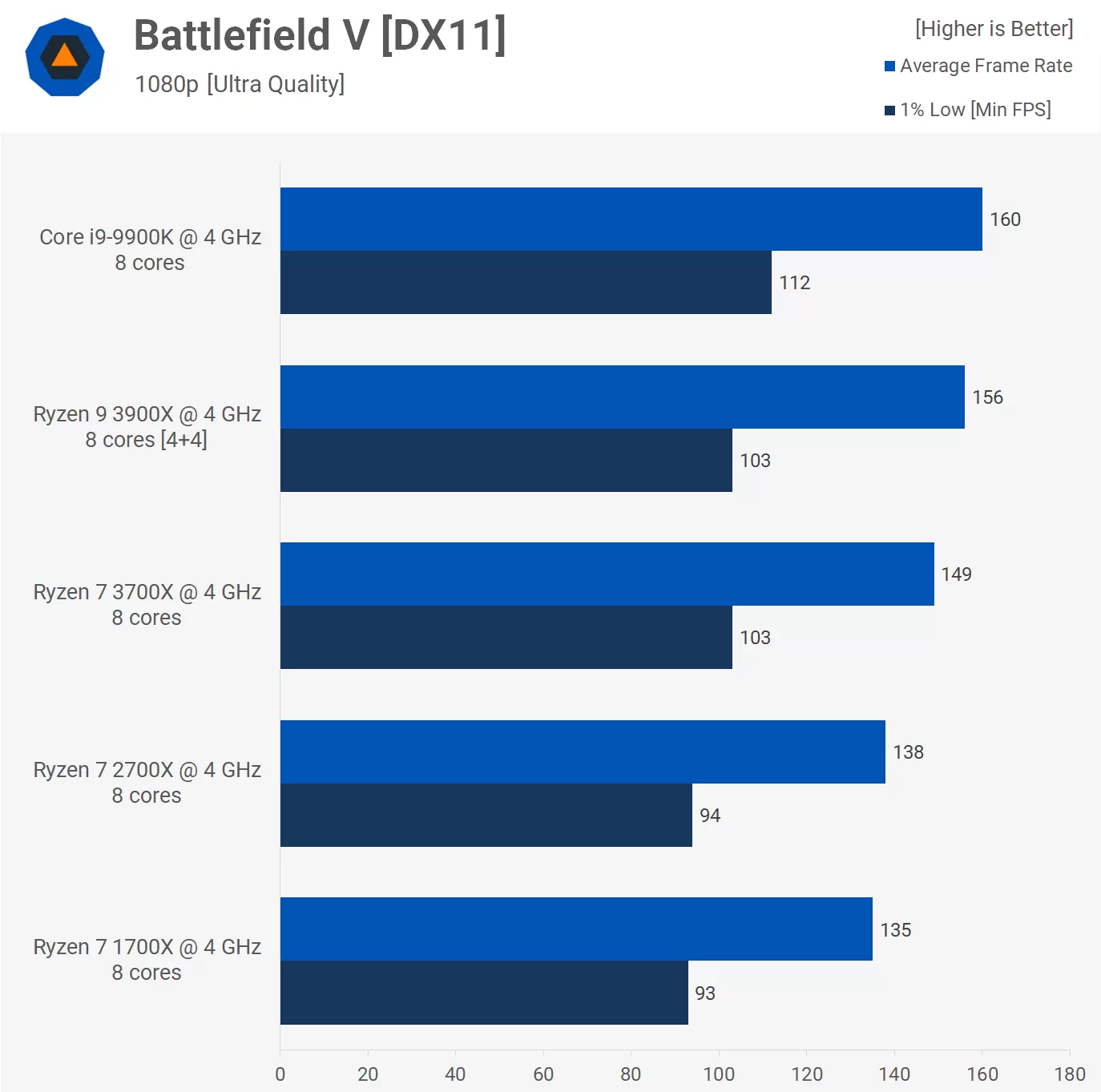
The 9900K also takes the first place in Far Cry New Dawn, beating the 3900X by a 5% margin for the average frame rate, and 10% for the 1% low result. This is while running at a frequency lower than out of the box.
That's not to say AMD hasn't taken a noteworthy jump: the 3900X was a full 20% faster than the 2700X, while the 3700X offered a 16% performance improvement.

Even at 1080p with an RTX 2080 Ti, Total War: Three Kingdoms is mostly GPU bound. We can still see some improvement to the 1% low results and again Intel comes out on top.

World War Z has received an update that dramatically improves performance. This update sees Ryzen processors perform significantly better and now the 3900X is able to roughly match the 9900K in our IPC test.
The dual chiplet 3900X was again a bit faster than the single chiplet 3700X, offering a 4% bump for the average frame rate. The 3900X was 14% faster than the 2700X, while the 3700X was 9% faster.

Another game we decided to check out was World of Tanks. This title was recently redesigned to take better advantage of multi-core CPUs. When matched at the same clock speed the 3900X provided marginally better 1% low performance than the 9900K, while average frame rates were about the same.
The 3900X was faster than the 3700X by 4% and a full 13% faster than the 2700X.
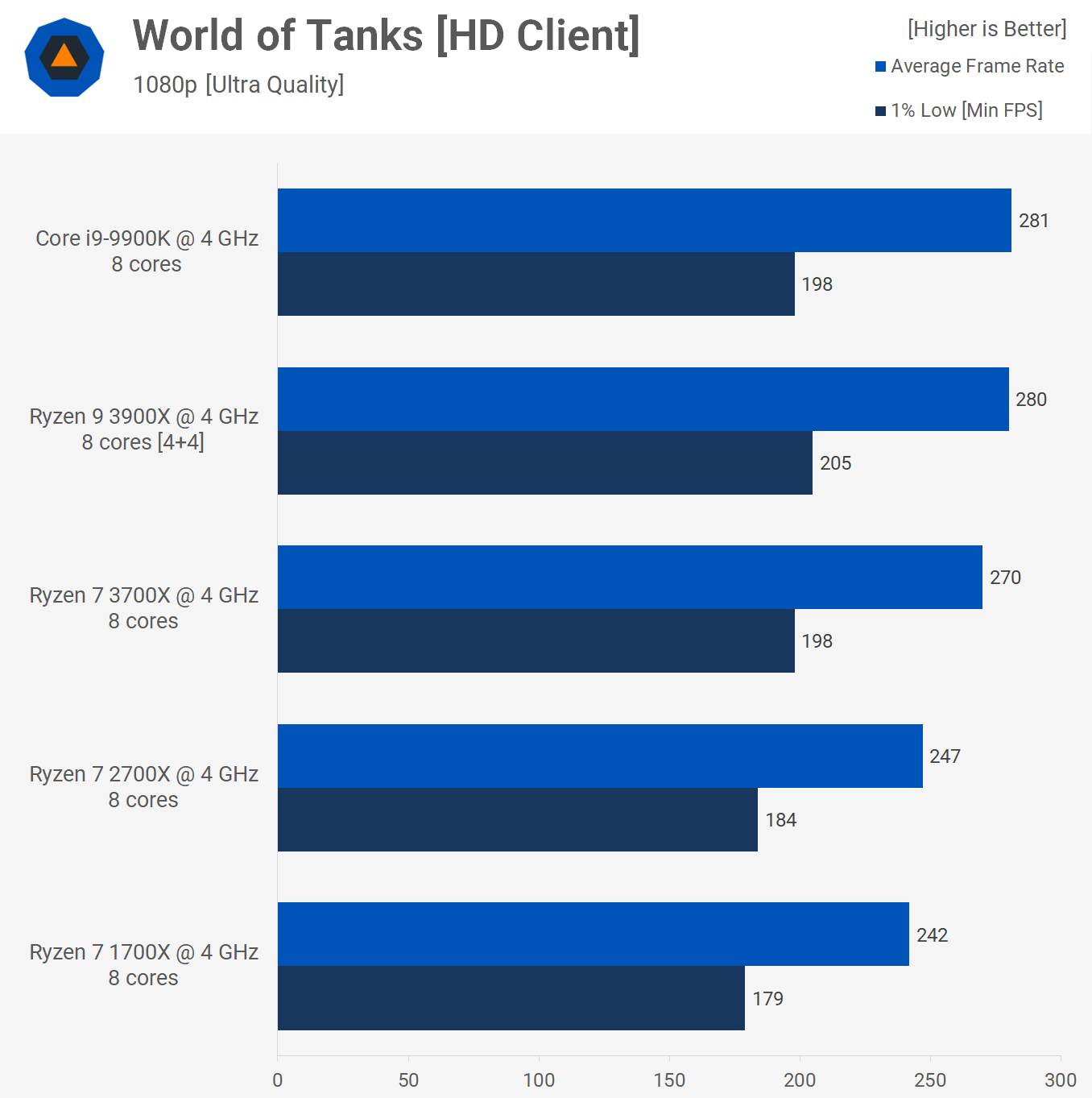
The last game we're looking at is Rainbow Six Siege. Even though this title is mostly GPU bound, we see the 9900K performing a good bit faster when looking at the average frame rate. 1% low performance was closer across the board.

Memory and More
Something we discovered when first testing the Ryzen 7 3700X was the much lower-than-expected write memory bandwidth. After discussing this with AMD, they explained they made a compromise here as client workloads do very little writing. Rather than using this space to improve something that isn’t needed, they invested the silicon real estate in more beneficial ways to achieve performance gains.
The end result being that the Core Complex Die to IO Die link for reading memory is 32 bytes wide, but it’s only 16 bytes wide for writing, and this is why the peak write bandwidth is effectively cut in half. However, because the 3900X has two CCDs it features two 16 bytes wide lanes for writing and this brings the peak bandwidth back up to around 50 GB/s.
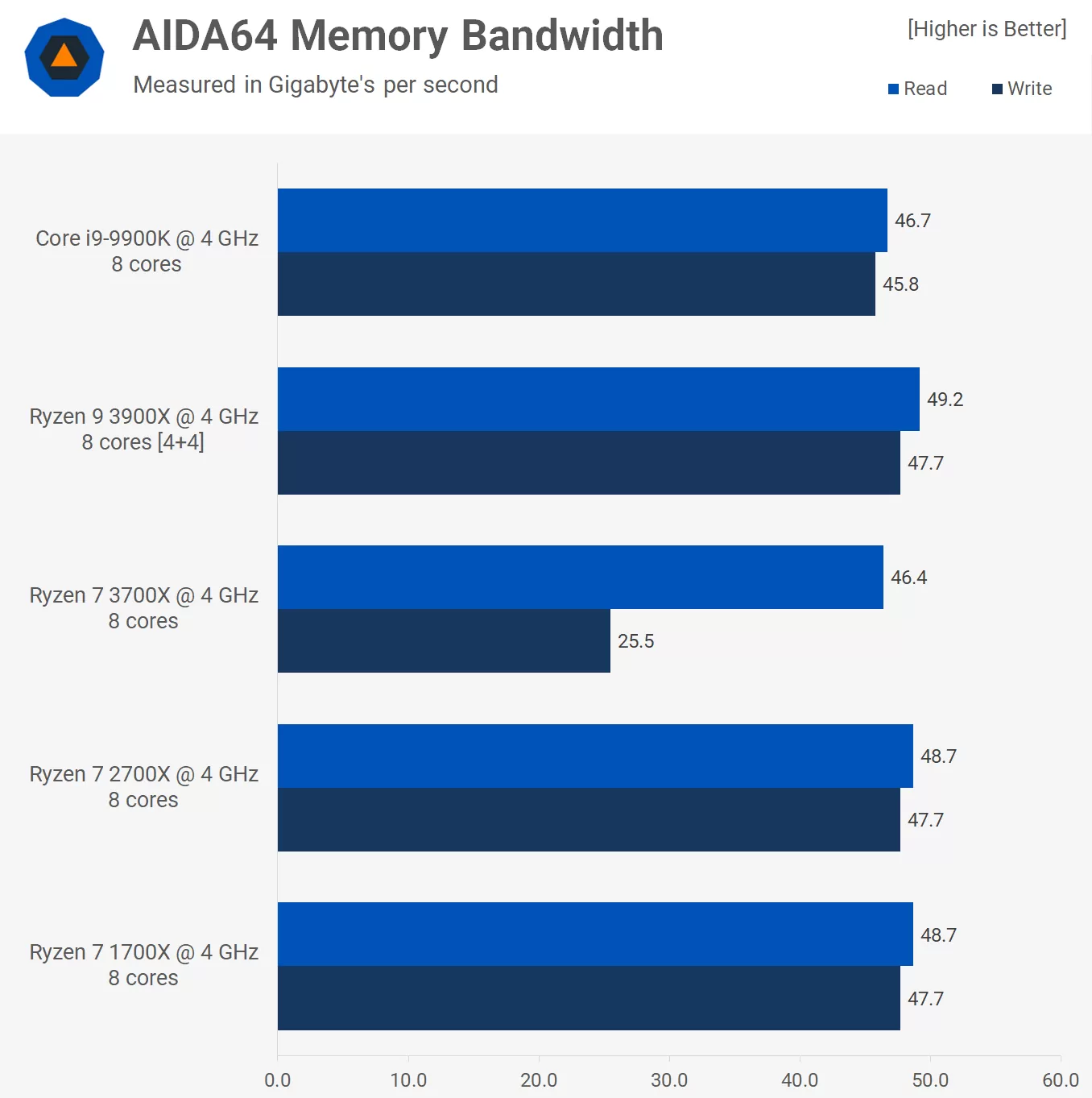
Moving on to cache bandwidth we see the 3700X and 3900X are virtually identical and both offer substantial gains for L1, L2 and L3 bandwidth over the 2nd-gen 2700X. L3 cache bandwidth has been increased anywhere from around 40 to 50% with 3rd-gen Ryzen.
We also see a 30% improvement in L2 bandwidth and an almost 100% increase in L1 bandwidth. That’s an incredible performance uplift and it goes a long way in explaining why we saw 100% performance gains in applications such as WinRAR.

As for memory latency, not much has changed. If anything we’ve seen an increase in memory latency from 2nd-gen Ryzen and we see this when looking at DRAM and L3 cache latency. The DRAM latency is 50% higher than that of the Core i9-9900K and this will be partly responsible for the difference in gaming performance just seen.
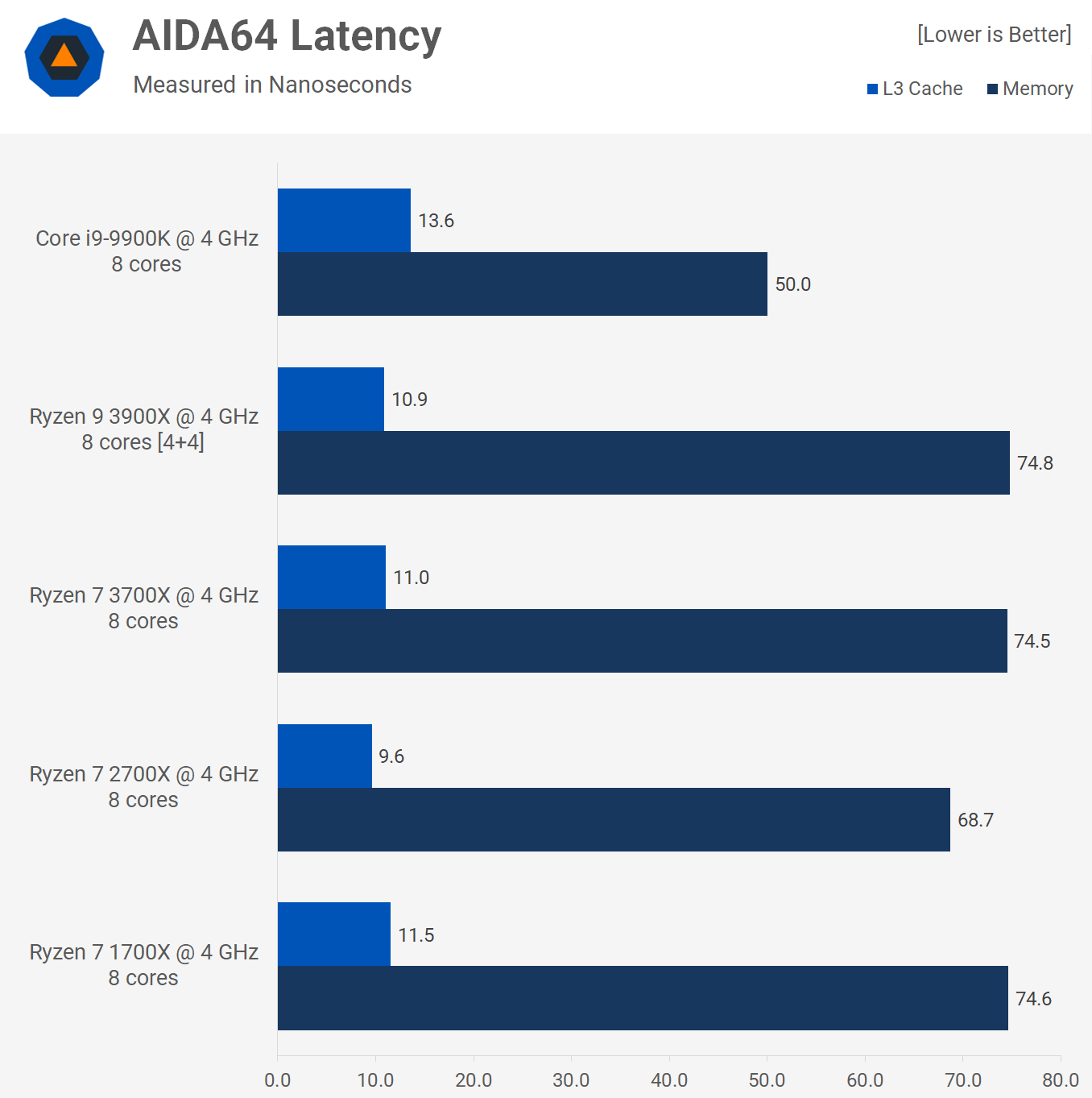
Another reason for the slightly lower gaming performance is core latency. When compared to 2nd-gen Ryzen, the newer architecture is a massive improvement. For the best matched cores we’re seeing a 30% reduction in latency and at least a 26% reduction for the worst matched cores. This means best case the core to core latency is actually reduced by 35% for the 3rd-gen Ryzen processor when compared to Intel's Coffee Lake architecture. Problem is, worst case latency is 54% higher, and this isn’t very good, especially when playing latency-sensitive games.
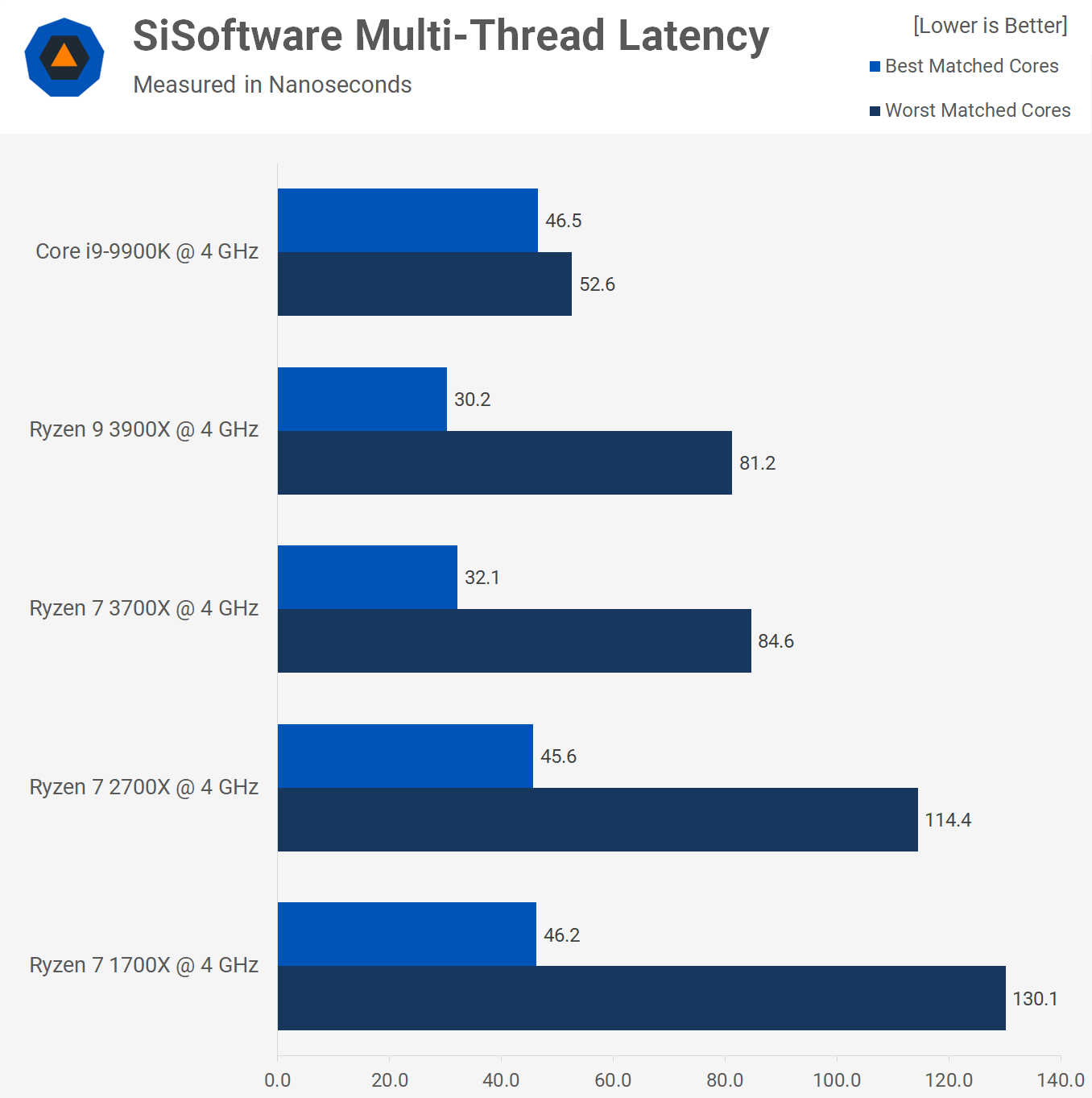
Wrap Up: Generational Upgrades
AMD has taken a big step forward with 3rd-gen Ryzen. We knew that from the moment we first tested the 3700X and 3900X and we were expecting good things after AMD claimed a 15% uptick in IPC performance at Computex prior to launch.
Our take is they weren’t exaggerating: with cores and clock speeds at parity the 3900X provided an 18% improvement over the 2700X in Cinebench's multi-core test and 13% for the single-core test. We also saw a 13% improvement in V-Ray and 16% in Corona.
You can’t really use games for measuring IPC gains but they’re still interesting to look at for clock-for-clock comparisons. One obvious issue with games is that they’re not always CPU bound and even when they are, the degree to which they are CPU bound can vary. For example, we saw minor performance gains in Rainbow Six Siege and Total War: Three Kingdoms, but in these two titles we were heavily GPU bound. The 3900X was ~13-14% faster than the 2700X when testing with World of Tanks, World War Z and Battlefield V and an even more significant 20% performance improvement in Far Cry New Dawn.
Eventually we may look into adding a Skylake-X processor in this kind of testing, though we might wait for 3rd-gen Threadripper to arrive before getting into that comparison.
Shopping Shortcuts:
- AMD Ryzen 5 3600 on Amazon, Newegg
- AMD Ryzen 5 3600X on Amazon, Newegg
- Intel Core i5-9600K on Amazon, Newegg
- Intel Core i5-9400F on Amazon, Newegg
- AMD Ryzen 5 2600X on Amazon, Newegg
- AMD Ryzen 9 3900X on Amazon, Newegg
- AMD Ryzen 7 3700X on Amazon, Newegg
- GeForce RTX 2070 Super on Amazon, Newegg
- GeForce RTX 2060 Super on Amazon, Newegg
- GeForce GTX 1660 Ti on Amazon, Newegg
https://www.techspot.com/article/1876-4ghz-ryzen-3rd-gen-vs-core-i9/
2019-07-15 12:01:00Z
52780332788103

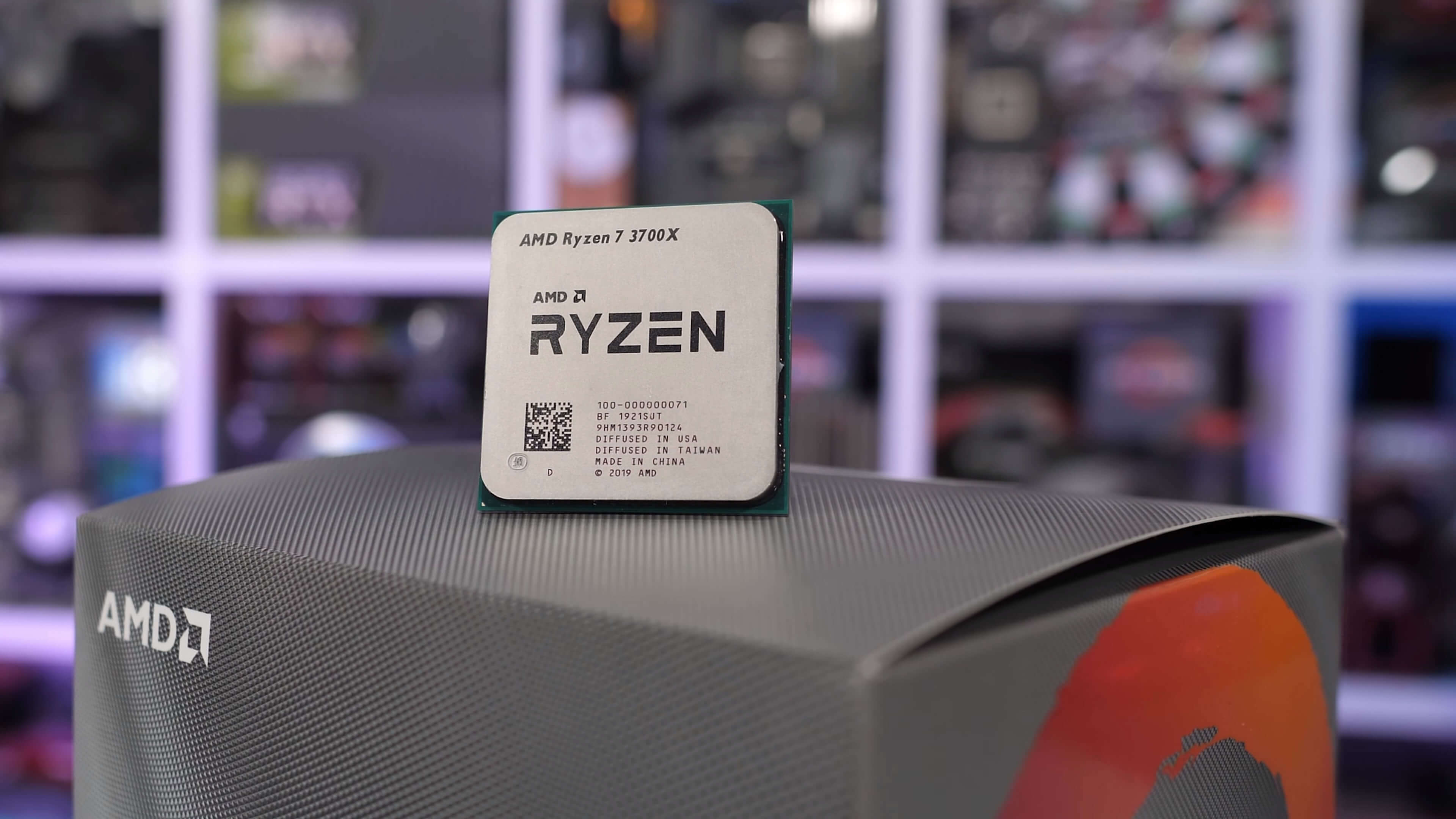

Tidak ada komentar:
Posting Komentar